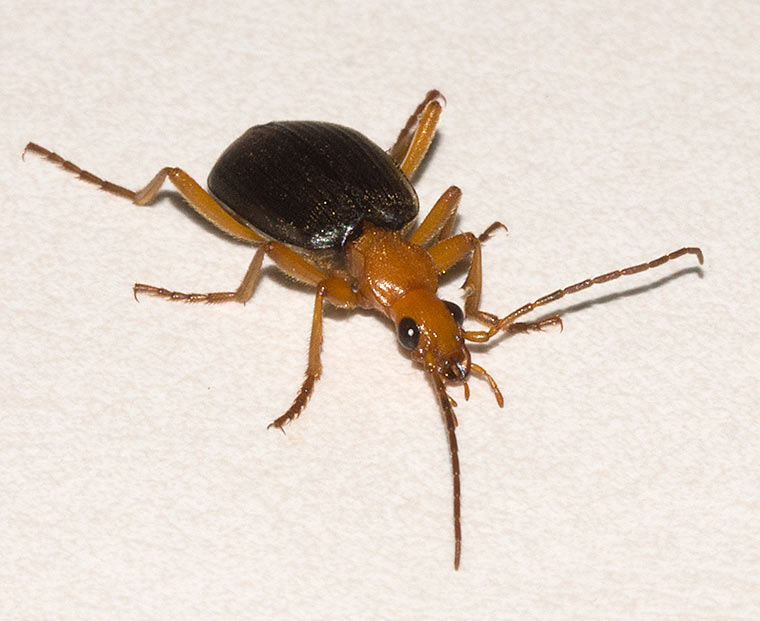Another recent visitor to the moth sheet was the brightly colored beetle pictured here. This is, I believe, Lebia grandis. They are mainly active at night, and the best way to find one is to look around outdoor lights.
These beetles are quite useful to us, because they are specialist predators of eggs and larvae of the Colorado Potato Beetle (Leptinotarsa decemlineata). Each beetle can eat about three larvae daily. As anyone who tries to grow potatoes can attest, we can use all the help we can get to combat the Colorado Potato Beetle.
The Colorado Potato Beetle originally fed on a plant called Buffalo Bur in Mexico. It was only in the 1850’s that it began to feed on potatoes. It rapidly emerged from Mexico and spread across the U.S. to become a pest wherever potatoes were grown. Lebia grandis was present in potato-growing areas of the U.S. before the Colorado Potato Beetle arrived. Lebia grandis apparently was feeding on Leptinotarsa juncta, another beetle closely related to the Colorado Potato Beetle. Lebia grandis appears to have switched species and began to specialize on the now more abundant Colorado Potato Beetle sometime after the 1850’s.

